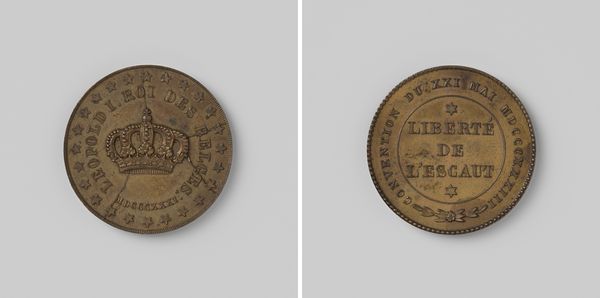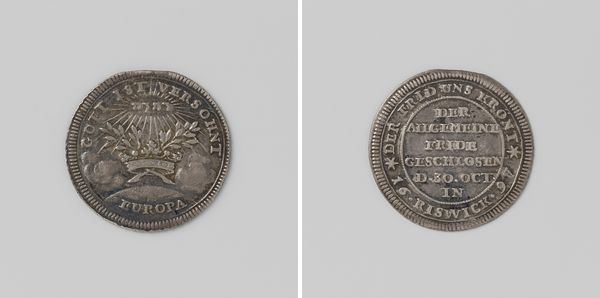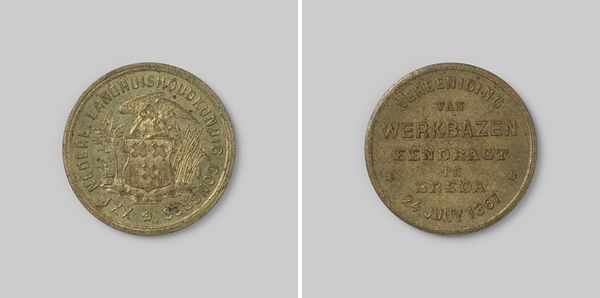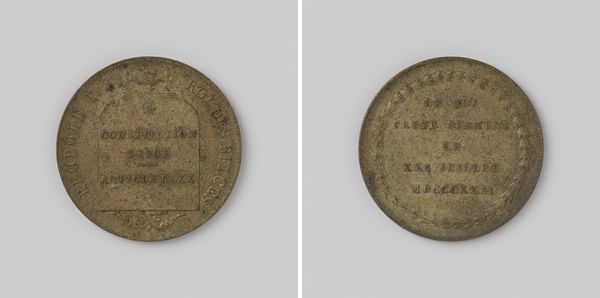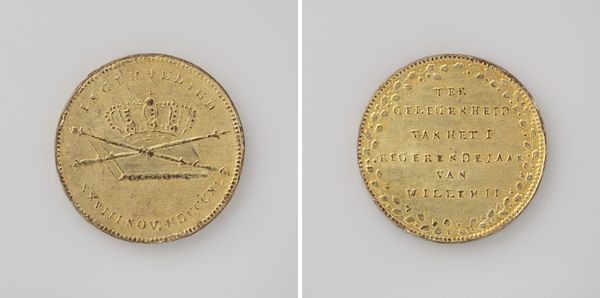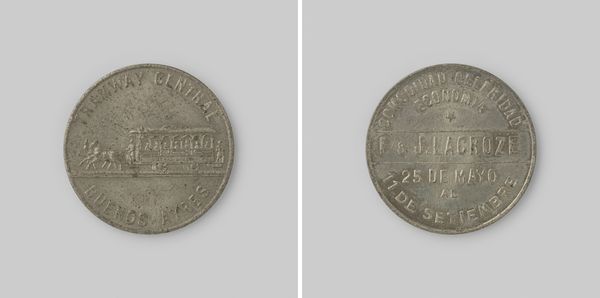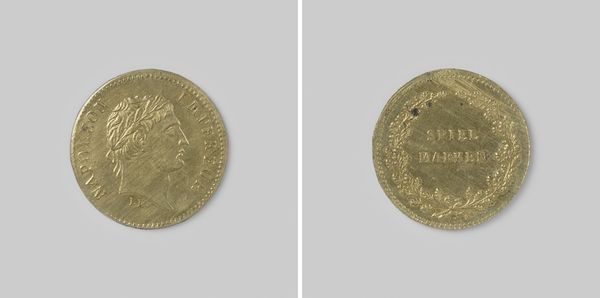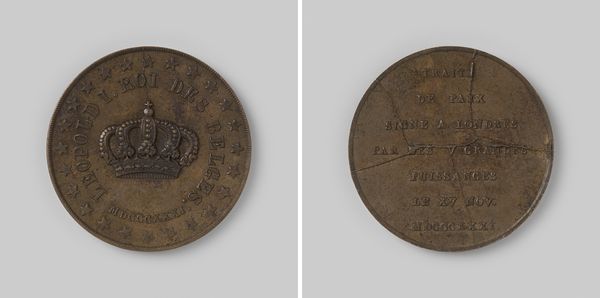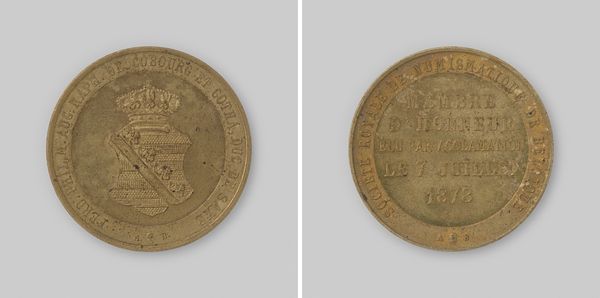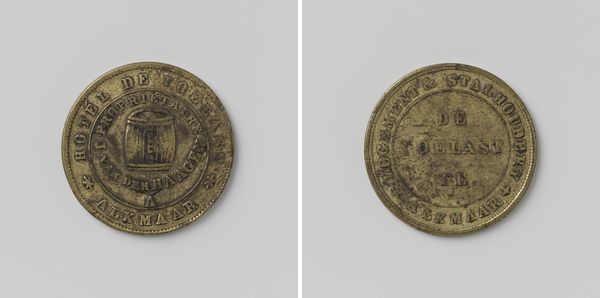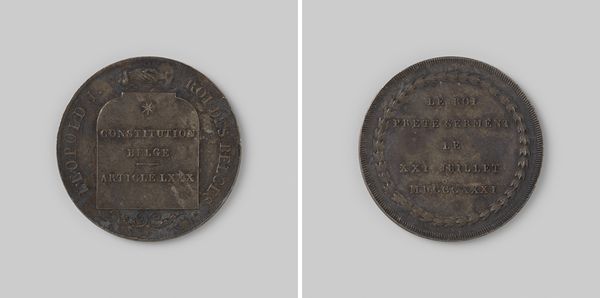
metal, bronze
#
portrait
#
metal
#
bronze
#
ancient-mediterranean
#
history-painting
#
miniature
Dimensions: diameter 2.6 cm, weight 7.26 gr
Copyright: Rijks Museum: Open Domain
Curator: It has a muted sheen. It reminds me of well-worn currency. Editor: Indeed. We are looking at a bronze medal dating back to sometime between 1827 and 1882, titled “D. Kreunen Azn., banketbakker aan de Keizersgracht, hoek Leidschestraat". It serves as a tangible piece of Amsterdam's commercial history. Curator: A token from a bakery? Interesting! The inscription seems very assertive in its claims of its geographic location. It evokes the politics of businesses staking out their urban territories, literally inscribing their brand into the material fabric of the city. Editor: Absolutely! Look at the precision of the lettering, typical for minting. But let's consider what it meant to consume pastries, produced at D. Kreunen Azn.'s bakery. For what segment of society was it affordable and what role did sugar play in that period? Was it locally sourced? Curator: Yes, considering the role of confectioneries as sites for community and public gathering raises some interesting questions around inclusivity and accessibility. Amsterdam's famed canals were a hotbed for not just sugar-funded industry but also chattel slavery across continents. And those dynamics are central to the city's development. Editor: Very important points. These businesses relied on a network of labor and extraction. Perhaps the image of the eagle implies power and a connection to a broader, global trade system sustained by this colonial structure. The placement of '1827' makes me wonder, was it an anniversary or some crucial time mark for the company? It speaks to the evolution of craft into industry. Curator: Placing it within its social context underscores its symbolism and history. We gain a clearer perspective on not only Amsterdam but also our position as witnesses to the object. I've been thinking lately about material remnants from our world ending up in distant, unknown futures, it's striking how much information we might pass along through something we've mostly ignored here. Editor: Precisely! Every object encapsulates countless layers. It prompts questions about consumption, history, and global power relations. Curator: It has been fascinating examining this historical piece together, it is indeed revealing about the socio-political history. Editor: Agreed. This has changed my view and I’ll need a pastry after this!
Comments
No comments
Be the first to comment and join the conversation on the ultimate creative platform.
